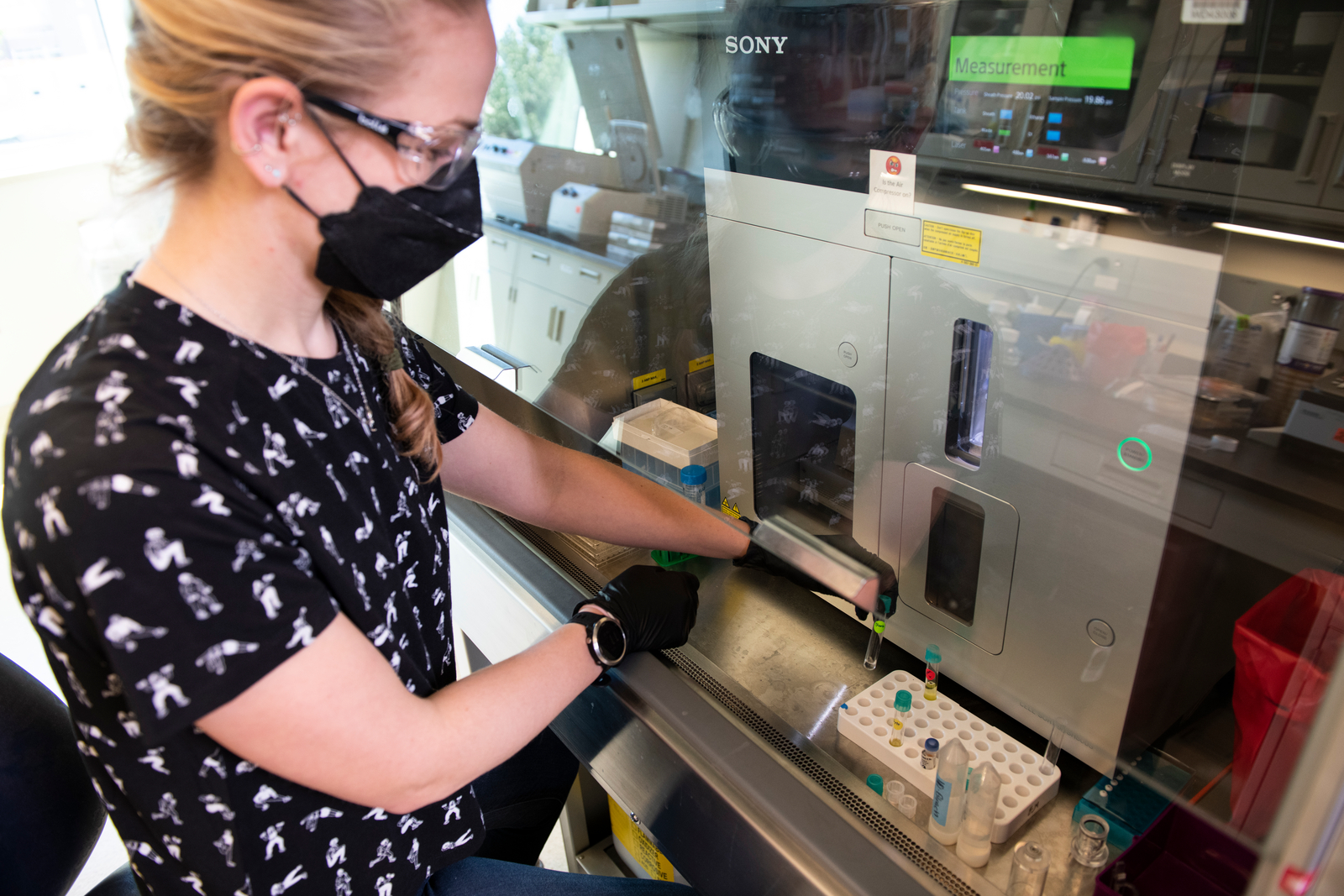Chemical Biology
Chemical Biology
Molecules to probe
metabolic function
Molecules to probe
metabolic function
(Image by Andrea Starr | Pacific Northwest National Laboratory)
When tracking the chemical reactions that maintain life, multi-omic measurements provide a roll call of biomolecules present in cells, tissues, or microbiomes. To determine which of these molecules is active, however, requires a different tool.
Pacific Northwest National Laboratory (PNNL) scientists design and build molecular probes that characterize enzyme catalytic activity or mimic small molecules to understand their transport, interactions, and metabolism in biosystems.
These probes bind irreversibly to specific classes of functioning proteins in cells, tissues, live cells and microbiomes. The scientists detect the binding using mass spectrometry or fluorescent labels that enable imaging and flow cytometry. These tools are advancing our understanding of biological function across plants, animals, and microbes.
Researchers at PNNL have developed chemical probes to identify enzymes in soil microbiomes that break down cellulose—important in biofuel production—and chitin, a key component in carbon and nitrogen cycling.
Chemical probes developed at PNNL to mimic common B vitamins help us track how these nutrients shape microbial communities in natural environments.

Our researchers use these probes to follow how fatty foods affect liver or lung metabolism in ways that could influence how the body processes medicine. We track how key detoxifying enzymes in liver and lung tissue change with age or after exposure to environmental contaminants, illicit drugs, or dietary changes.
In parallel, we examine how antibiotics affect the workings of the gut microbiome, and how gut microbes could influence our body’s internal clock, with implications for health, wellness, and workforce resilience.